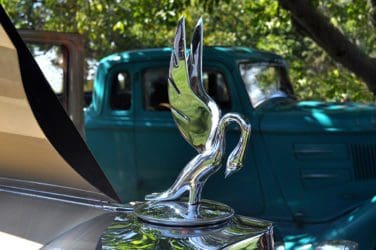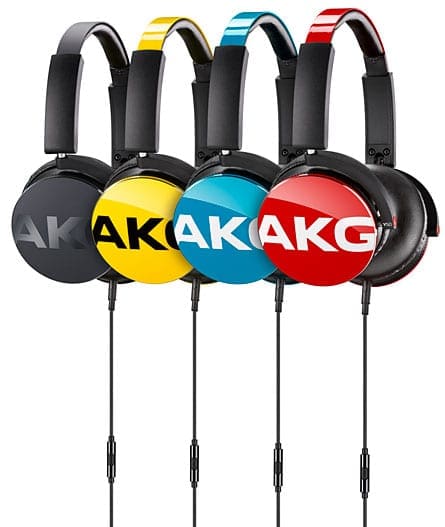words Al Woods
Automotive technology is rapidly evolving – We’ve recently seen the introduction of driverless innovations, luxury heated systems, surround sound and self-parking vehicles.
However, for many, vintage cars cannot be beaten. Older vehicles were designed differently – their flowing lines and curves unlike the cars that you see today.
And, the drive is different too – original cars require more manual work from the owner which leads them to favour the journey over their destination. Global retailers of straight stairlifts, take a closer look at classic cars from around the world…
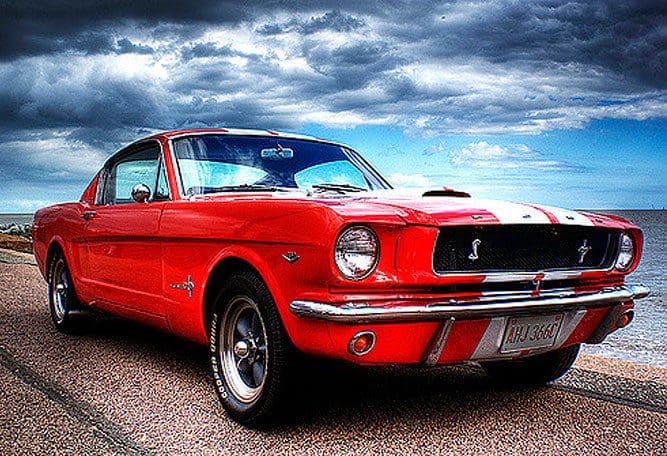 America – Ford Mustang
America – Ford Mustang
Originally manufactured in 1864, and its sixth generation is still being sold today. The ‘Stang started the ‘pony car’ craze in America — a collection of vehicles which were affordable, sporty and had a performance-oriented image. This class of the car was aimed towards the younger market, rather than the traditional car buyer and it proved popular. In fact, 22,000 sales of the model were made on its release date.
The aim of model was for it to be not like any other car. This was achieved through its sport coupe silhouette and short rear decks. The generations that came after the ’64 version seemed to become wider and longer in size, yet still remaining as popular.
The classic Mustang is believed to be the models between 1964 and 1972. This encompassed vintage models such as the Boss Mustangs Lineup, Shelby Mustang and the Cobra Jet. If you own a classic Mustang or a newer model, upgrading your Mustang with performance parts such as Mustang coilovers can further enhance its driving dynamics and overall performance. By installing coilovers, you can achieve improved handling, better cornering capabilities, and a more aggressive stance. Whether you’re a Mustang enthusiast looking to optimize your car’s performance on the track or simply want to enhance the driving experience on the road, upgrading your Mustang is a great way to unlock its full potential.
As the classic Mustang legacy endures, enthusiasts have witnessed a fascinating blend of tradition and innovation. In recent years, custom-rebuilt 1967 Shelby GT500 models have emerged, seamlessly integrating modern performance specifications with the timeless charm of a classic muscle car. These revamped icons boast contemporary features while preserving the iconic design of the original GT500.
Today’s Value: £6,500 – £70,000 depending on model, age and condition.
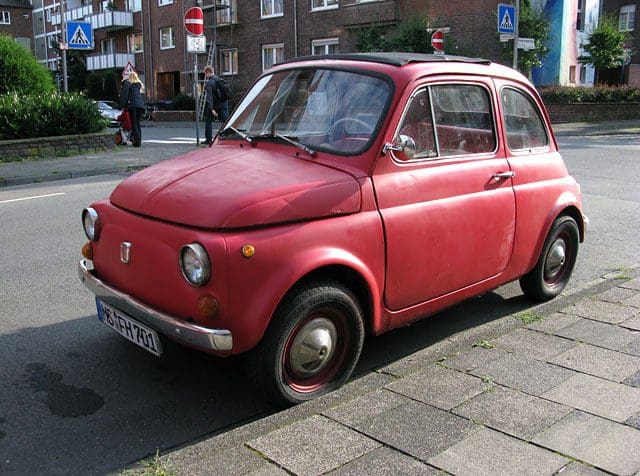 Italy – Fiat 500
Italy – Fiat 500
The Fiat 500 is symbolic to Italy, like the Vespa, and many tourists like to hire the 2007 version of the car to explore the country in style. Fiat has produced many products that weren’t related to the automobile industry, such as aircraft engines and military equipment during World War II. Their first car rolled off the production line in 1900 and, in the same year, their manufacturing plant was established which lead to the production of 24 cars per year.
The automobile was originally designed to be an affordable small car for everyone, the brand went on to produce many other successful models in time such as the elegant 525, economical 514 and the SuperFiat. The original Fiat 500, commonly known as Topolino, was launched in 1937. It stood out from competitors with a lowered aerodynamic nose profile whilst others had a flatter grille. Fiat went on to produce two further models of the 500, one in 1957 and the other in 2007.
Today’s Value: £4,000 – £50,000 depending on model, age and condition.
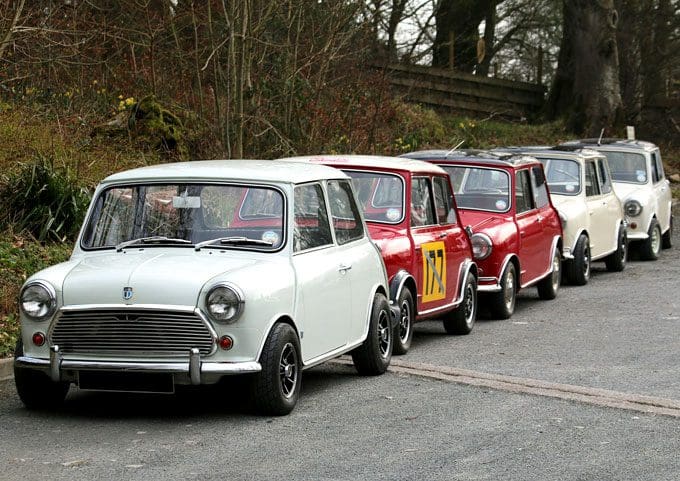 Britain – Mini
Britain – Mini
Iconic to Britain, like Buckingham Palace and the red double decker buses, the Mini was originally penned on the back of a napkin in a restaurant by Alec Issigonis in 1956. By 1959, the car had been launched, named the Morris Mini Minor at the time (known as simply the Mini ten years later) and it went on to become the best-selling British car in history.
The purpose of the automobile, was to provide passengers with plenty of legroom whilst remaining under 10ft long. Achieving this, 80% of the car was devoted to passenger and luggage space. Since the boot was smaller, Mini came up with a solution to maximise on space. The company offered the extra option of picnic wicker baskets which fit perfectly underneath the rear passenger seats and were ideal for transporting belongings from A to B.
To be able to fit the compact engine into the car, it had to be placed on its side allowing it to be slid into the smaller space, which the concept is still being used today when creating smaller vehicles. Wheels on other cars at the time were generally around 15 and 16 inches, those on the Mini however were a tiny 10-inches to maximise interior space.
Today’s Value: £5,000 – £50,000 depending on the model, age and condition.
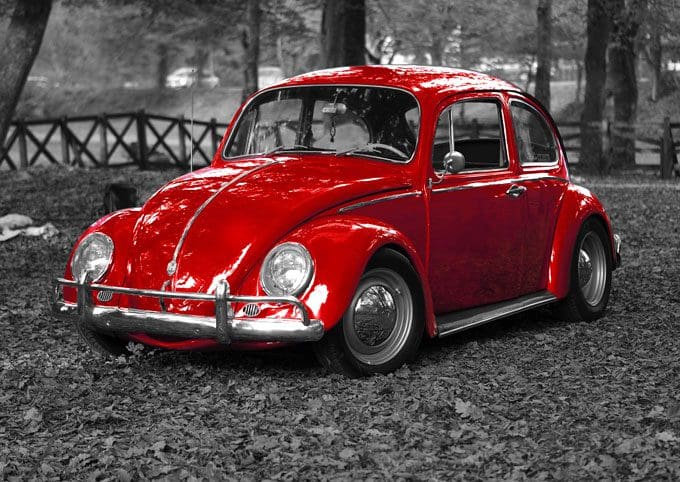 Germany – Volkswagen Beetle
Germany – Volkswagen Beetle
It’s unknown on how the Beetle got its name. The first time the reference was used in print was in a 1958 edition of Autosport magazine and the use of the term continued to grow. Built either side of World War II, it took a while for the Beetle to gain popularity. Just as the first few cars were manufactured in 1938, the war began, and the factory was used for war efforts instead. It wasn’t until 1947 when people finally got behind the wheel of the automobile.
The automobile was built with strength in mind over aesthetics – although it is its iconic appearance that makes it sought after today. One of the features that many collectors love is the original split-rear window design that got replaced by a single oval window in 1952. Unlike smaller vehicles that were around at the same time, the Beetle accommodated for four adult passengers with plenty of storage beneath the seats and in the boot.
Today’s Value: £1,000 – £40,000 depending on model, age and condition.
Many collectors take pride in restoring classic cars – usually they have to strip the entire vehicle apart and put it back together with restored parts. The prices of each model range massively due to the quality of the vehicle, the mileage and the model — which one takes your fancy?

